What Animals Live In Death Valley?
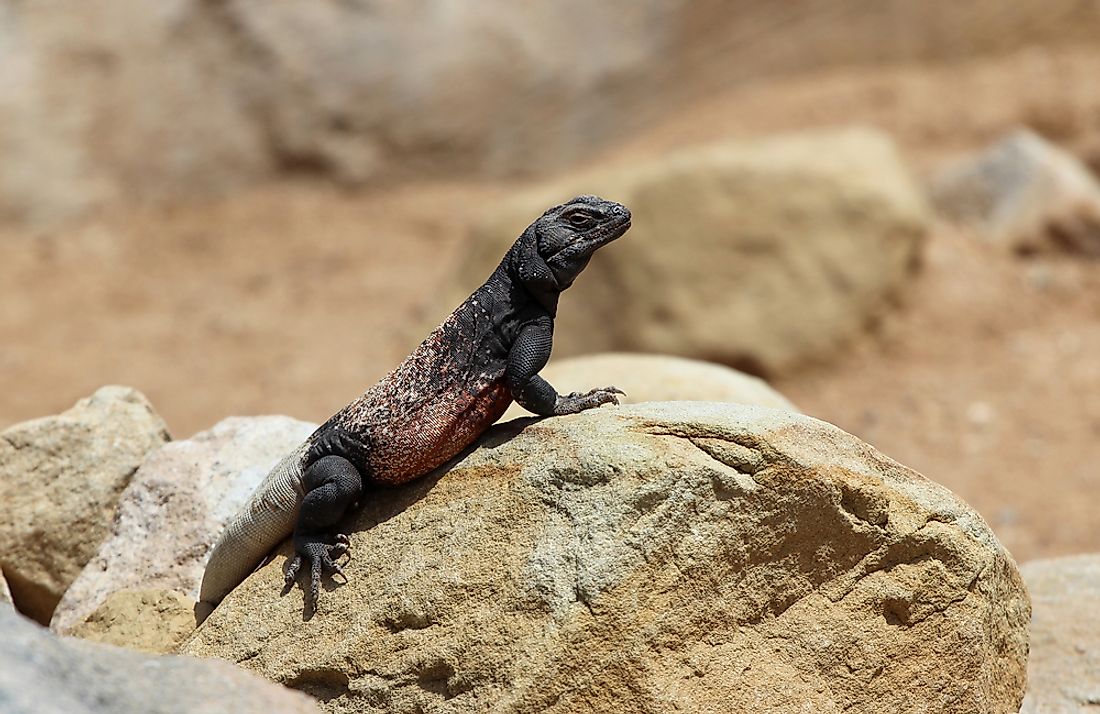
The unforgiving environment of the Death Valley in Eastern California, United States, has claimed many humans lives in the past. However, despite its name, Death Valley also sustains a variety of life forms. All flora and fauna found in the Death Valley have adaptations without which they would not have lasted for a day in the extreme environment.
The Death Valley forms the northern part of the Mojave Desert. It is one of the world’s hottest places. The hottest temperature of 56.7 °C was recorded at Furnace Creek in the Death Valley in 1913. It is the highest temperature ever recorded at the Earth’s surface. Very little to no rain at all is experienced in different parts of the Valley. Death Valley sprawls across an area of 7,800 square km and has a rough terrain consisting of sandy and rocky stretches of land surrounded by hills and mountains.
8. Desert Bighorn Sheep
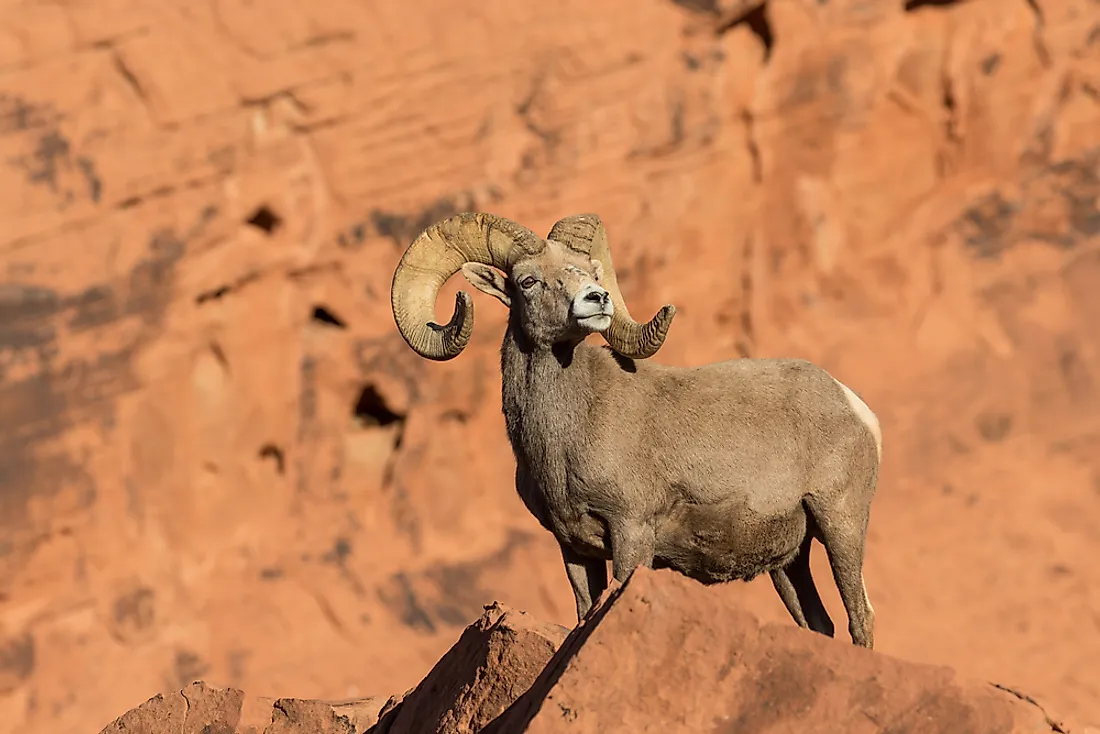
Ovis canadensis nelsoni is one of the iconic species of the Death Valley. It is found throughout the deserts of America’s southwestern regions and intermountain west. The range of this species also extends south to northwestern Mexico. In the Death Valley, the bighorn sheep can be spotted at all elevations including inaccessible ridges and canyons, usually close to water sources. These sheep are heavily-bodied and stocky with adult rams weighing around 52 to 127 kg. They have concave elastic hooves that allow them to climb the steep and rocky desert terrain with absolute ease. They also have keen eyesight that helps them in defense against predators. They are easily distinguished by their long curling horns. They can survive without water for months. Despite being adapted to the harsh desert, these sheep have not been able to thrive after humans started interfering in their habitat. Excessive hunting and competition from domestic livestock and the loss of water resources due to human occupancy have dwindled the population of this species from millions to a few thousand. In the US, the Endangered Species Act 1973 labels the desert bighorn sheep as Endangered.
7. Sidewinder Rattlesnake
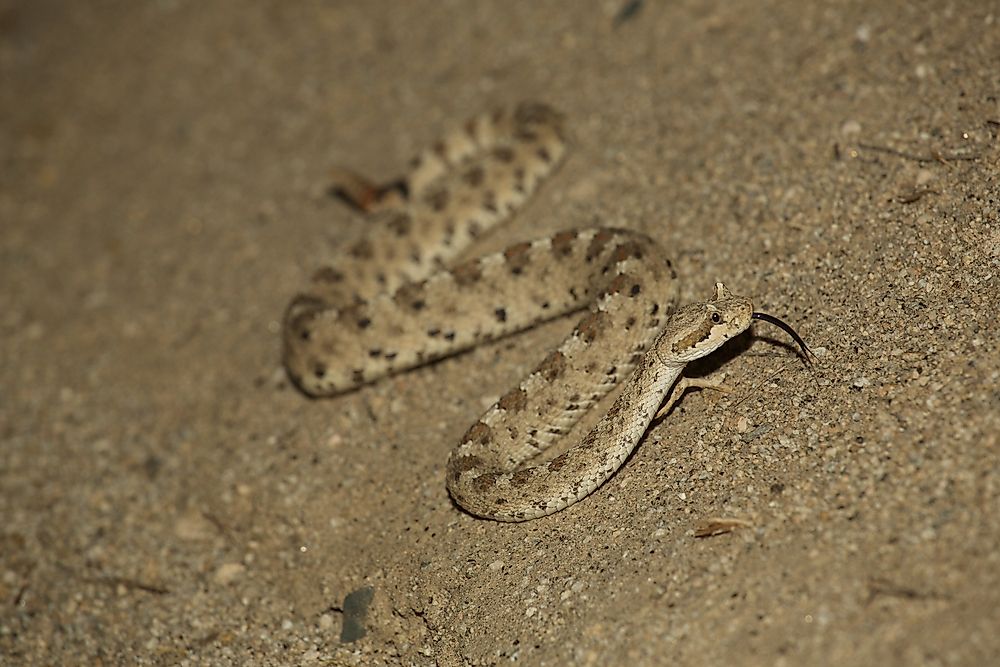
The Crotalus cerastes, also called the horned rattlesnake is one of the most dangerous residents of the Death Valley. As its name suggests, the sidewinder exhibits an unusual form of locomotion whereby it moves by sidewinding that is an adaptation that gives it traction on windblown desert sand. The sidewinder is a highly venomous species of a pit viper. It has a relatively small size varying between 43 and 76 cm. Females are usually larger. The body color ranges from cream, buff, and yellowish-brown to ash grey or pink. Dorsal blotches are also present. Rodents, reptiles, insects, etc., comprise the diet of these snakes. The species has stable populations and hence listed as least concern by the IUCN.
6. Chuckwalla
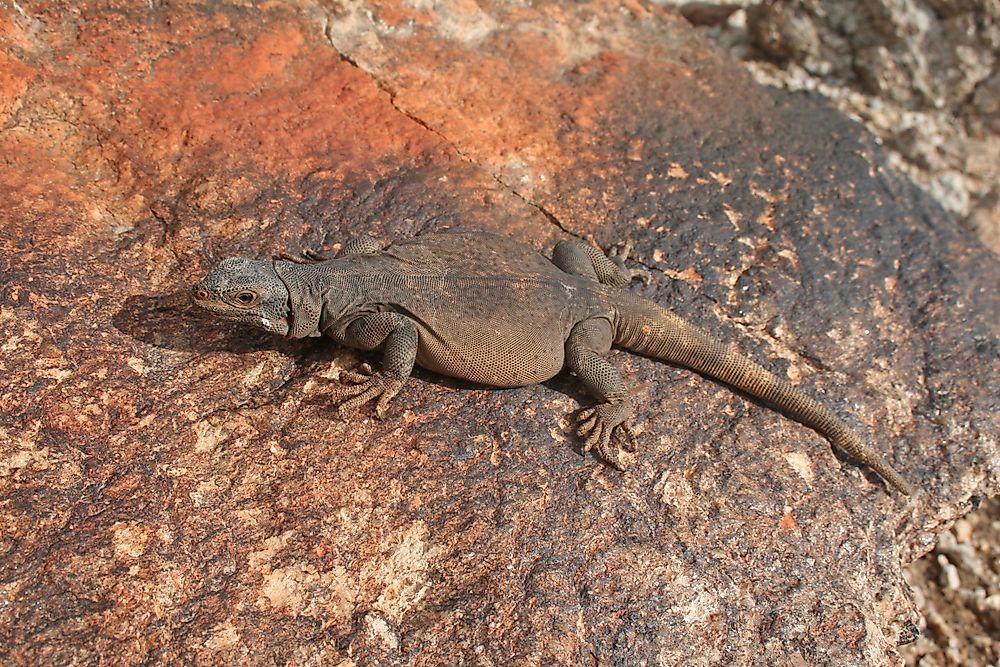
Large lizards called chuckwallas also live in the Death Valley. The range of these reptiles include the arid regions of southwestern US and northern Mexico. In the Death Valley, they occur in areas with large boulders and rocks on alluvial fans up to 5000 ft. They are common in Towne Pass, Titus Canyon, and Dante's View road areas. Chuckwallas are wide-bodied, stocky lizards with thick tails with blunt tips. Their neck and sides have loose skin folds which are covered in small scales. The chuckwallas are primarily herbivorous. They feed on desert plants. Insects are occasionally consumed to supplement their diet. They are diurnal creatures that can be spotted basking in the desert sun. They are quite harmless to humans.
5. Coyote
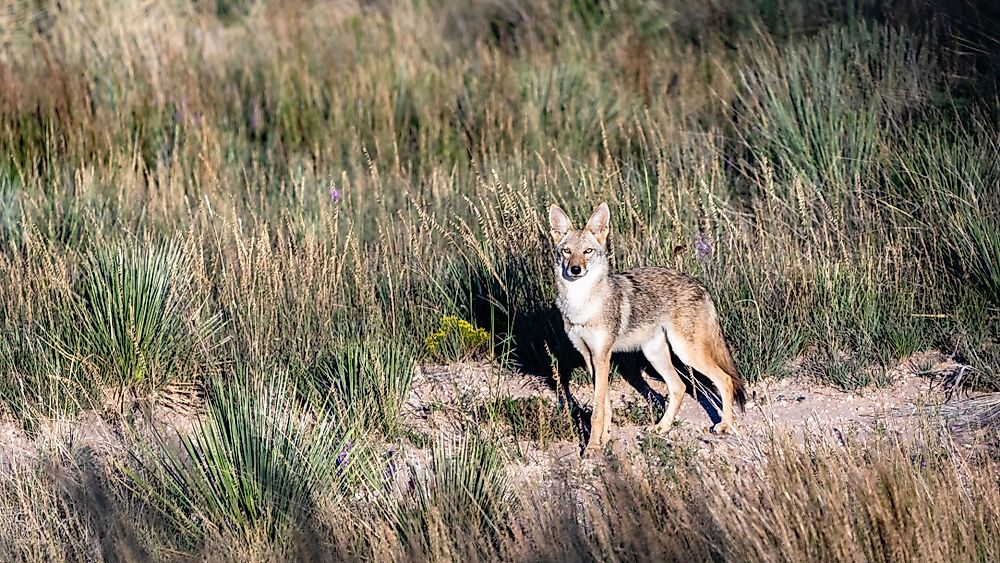
The Canis latrans is one of the largest predators in the Death Valley. Here, it is found in salt flats into mountains and is common around mesquite thickets. The species is widely distributed in North America and into Central America. It has stable populations and hence is a Least Concern species. The coyote’s ability to survive in a variety of habitats including the deadly Death Valley makes it one of the fittest of all species. A coyote male weighs around 8 to 20 kg while the females weigh slightly less. The fur color varies from light grey to fulvous. Coyotes live in family units or loosely knit packs. They hunt for rabbits, rodents, birds, reptiles, etc. Occasionally, they might also consume plant parts.
4. Desert Tortoise
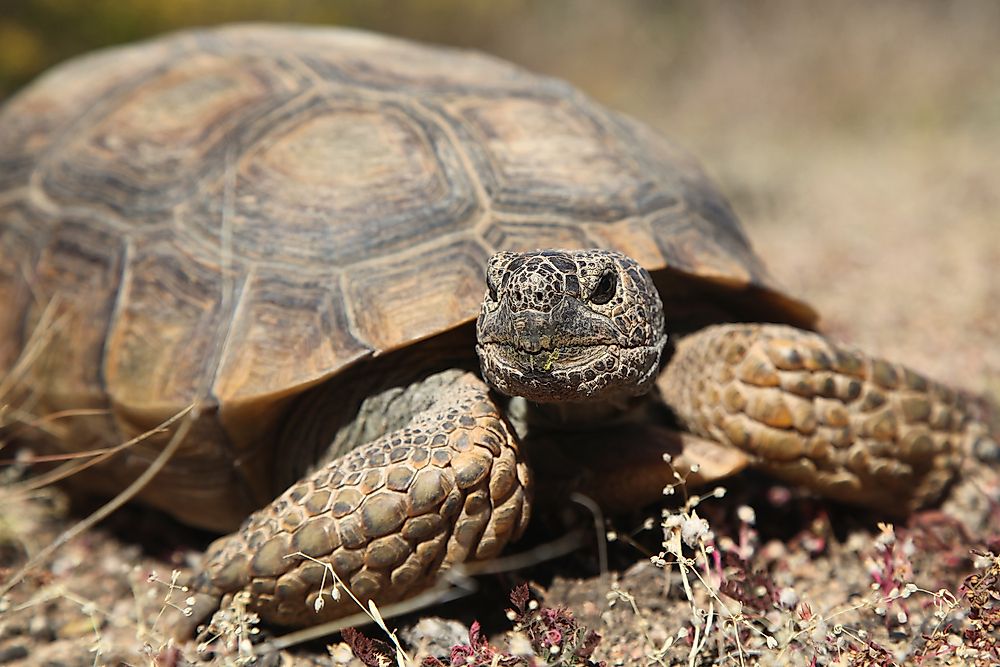
Gopherus agassizii is found in the flats and surrounding foothills of the Death Valley. They live in burrows at elevations ranging from 1500 to 3500 ft. The species can live for quite a long time, about 50 to 80 years. The tortoise grows very slowly and spends most of the time resting in shelters away from the scorching sun. During winter, the tortoise hibernates to avoid the cooler temperatures. The species is herbivorous with grasses, herbs, annual wildflowers, and cacti comprising its diet. It supplements its diet with minerals and digestive bacteria by feeding on soil and rocks. Most water is derived from the food they eat but they drink copious amounts of water during the seasonal rain and store it in their urinary bladder. It is important to not handle the desert tortoise in its native habitat. When under threat, it often empties its bladder which if not refilled soon afterward might lead to the death of the animal.
3. Rosy Boa
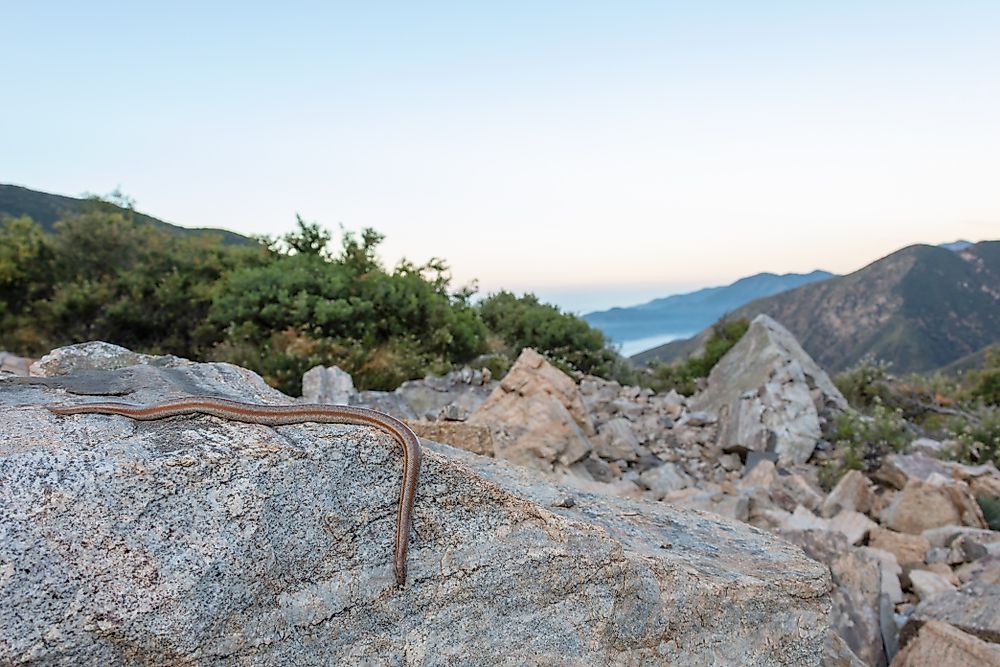
The Lichanura trivigata is found in the low foothills and canyons of the Death Valley at elevations of below 4,500 ft where it lives in sandy and gravelly habitats. The rosy boa is quite small with a total length of around 43 to 86 cm. Its skin is light-colored with a series of dark to orange spots on them. The rosy boa spends most of its time hidden in crevices and beneath rocks to escape the harsh climate and predators. It is dormant during the winter and breeds in spring. It is primarily nocturnal and forages for small mammals, birds, lizards, etc. It is a relatively docile creature when encountered by humans.
2. Desert Cottontail
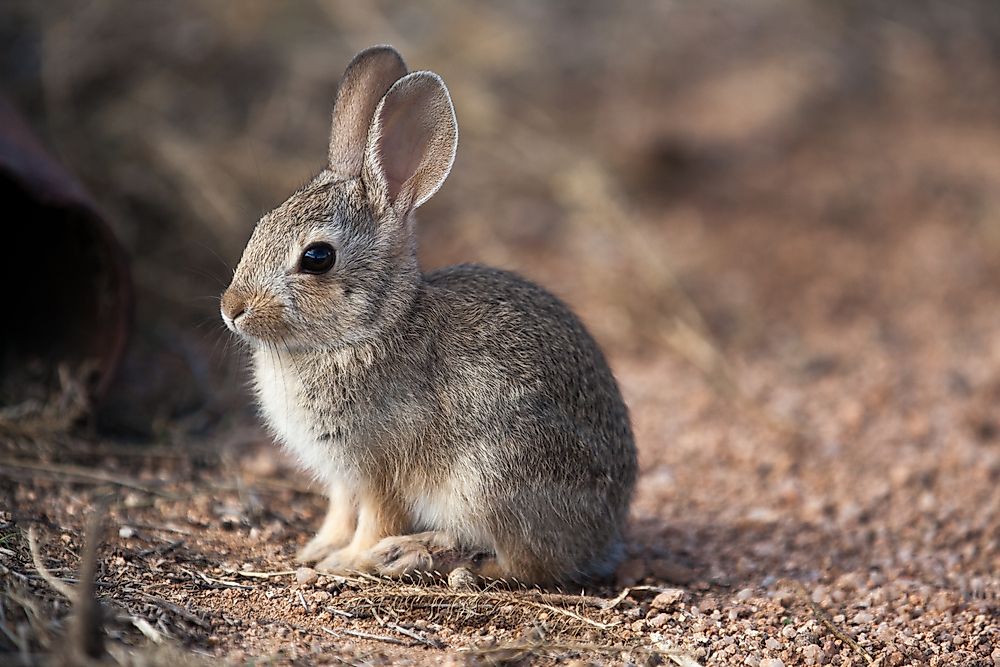
The Sylvilagus audobonii is widely distributed in the arid regions of North America. In the Death Vally, this species occurs in mesquite thickets on the valley floor. It occupies burrows vacated by other mammals to give birth or make shallow shelters of their own to take refuge or cool off. It forages in the early morning and evening but hardly comes out of its burrow on windy days. The desert cottontail is one of the main food species of carnivores dwelling in the desert. Adults of this species are 36 to 42 cm long and exhibit little sexual dimorphism. Grass and forbs constitute the diet of this species. It also feeds on cacti and other plants, leaves, and peas of mesquite, fallen fruits, etc. Due to its widespread distribution and large populations, the desert cottontail is enlisted as least concern.
1. Mountain Lion
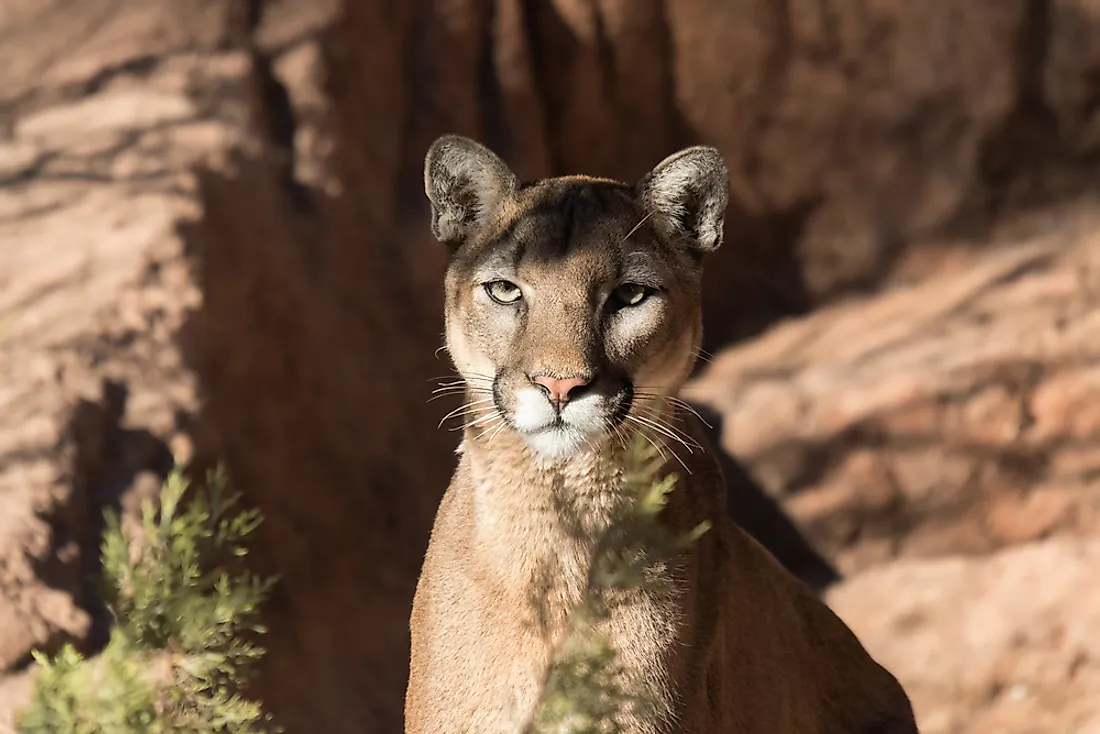
The Puma concolor is the apex predator of the Death Valley. It usually inhabits the mountains surrounding the valley but comes down occasionally during winter to the desert oasis. The species has a large range extending from Canada’s Yukon to the Andes in South America. It is a highly adaptable, generalist species that allows it to thrive in a variety of environments. Being an apex predator, the cougar has a broad prey base. It prefers areas with underbrush and rocks to stalk and hunt its prey. It is species of least concern as it currently has stable populations distributed worldwide.











